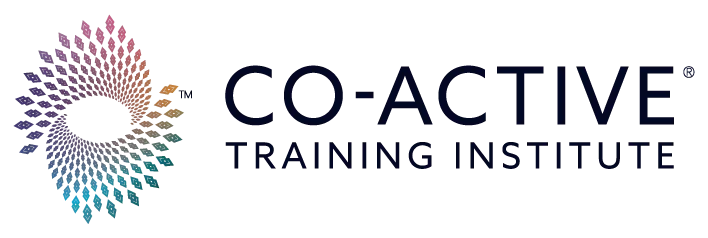Great coaching doesn’t happen by accident—it emerges from a clear understanding of the distinct yet interconnected roles both parties play. Too often, coaching relationships underperform because the boundaries, expectations, and responsibilities remain unclear. The coach may assume the client knows how to engage deeply, while the client may expect the coach to provide all the answers and direction. This misalignment creates frustration, surface-level conversations, and limited lasting change.
The solution lies in understanding and embracing the specific coaching responsibilities that each person brings to the relationship. When both coach and client step fully into their roles with clarity and commitment, something powerful unfolds: conversations that cut through surface-level problems, insights that stick, and transformation that lasts.
This isn’t just about the coach’s skills or the client’s motivation—it’s about how well both people connect and own their unique contributions within the coaching partnership. When these responsibilities are embraced and practiced, coaching becomes a true catalyst for genuine change, whether in one-on-one sessions or across entire organizations.
This blog breaks down the specific coaching responsibilities that make the difference, exploring what coaches and clients should each bring to create relationships that drive lasting transformation.
Ready to step into these coaching responsibilities and lead meaningful change?
Explore Co-Active Coach Training
Key Responsibilities of a Coach
To understand these coaching responsibilities clearly, we need to start with what sets coaching apart. A coach is not a fixer, advisor, or therapist. A coach is a partner. Grounded in presence and led by curiosity, coaches activate leadership in others by holding space and inviting possibility.
Establishing a Trust-Centered Relationship
The coaching relationship begins with deep, mutual respect and a foundational commitment: as Co-Active Coaches, we are always serving the client’s agenda. This means honoring both their “Big A” Agenda—their larger life purpose or direction—and their “little a” agenda—the specific topics or goals they bring to each session. This dual focus ensures that every conversation serves not only immediate needs but also connects to the client’s deeper sense of meaning and purpose.
Coaches create a space where clients feel safe to explore complex topics, speak honestly, and access their full selves. This includes:
- Listening without assuming a preconceived direction or attachment to the outcome.
- Adjusting style to reflect the client’s preferences and context.
- Navigating differences with cultural awareness and humility.
- Staying attuned to how session topics (the agenda) connect to the client’s broader life direction (their Agenda).
When coaches bring full presence and real curiosity while remaining committed to the client’s agenda at both levels, they help unlock the client’s wisdom and ensure that coaching serves their authentic path forward.
Defining Clear Boundaries and Agreements
Coaching duties and responsibilities include designing a structure that supports safety and clarity. This happens through:
- Co-created agreements outlining session frequency, length, and communication preferences.
- Defined scope—coaching does not diagnose or treat clinical concerns.
- Clarity on accountability: what will be tracked, who owns what, and how outcomes will be revisited.
Boundaries build trust and activate freedom within the relationship. When the container is substantial, the conversation can go anywhere.
Practicing Ethical Awareness
Ethics in coaching are more than items on a checklist. They are daily disciplines. Coaches remain conscious of the following:
- Confidentiality and the responsible use of information.
- Referring a client to therapy when needed.
- Avoiding dual relationships that blur roles.
- Staying within the scope of coaching and not offering expert advice outside one’s experience.
Ethical coaching builds integrity, which ultimately yields transformation.
Bringing Coaching Presence
Coaching presence is foundational of Co-Active practice. Coaches develop and practice:
- Deep, attuned listening—beyond words, into energy and intuition.
- Emotional self-regulation to stay grounded in challenging moments.
- Clean coaching—tracking the client’s world rather than overlaying assumptions.
- Mirroring the client’s language and rhythm to stay in partnership.
A coach’s ability to be fully present invites the client into the here and now.
Supporting Accountability and Growth
A coach holds up a mirror to the client. They invite their clients to take responsibility, act boldly, and learn from experience. Coaches track agreements and call out stuck patterns with clarity and compassion.
One global survey revealed that coached clients are significantly more likely to achieve goals than those without a coach. That impact happens not because the coach drives the action but because the coach believes in the client’s capacity to do so.
Engaging in Continuous Professional Development
Coaching mastery is an ongoing pursuit. Coaches commit to growth by:
- Pursuing ongoing training and education.
- Working with supervisors or mentor coaches.
- Staying current with coaching research and ethics.
- Deepening knowledge in areas their clients care about.
According to a recent International Coaching Federation study, 87% of executive leaders report a strong return on investment from coaching programs, especially when coaches are committed to evidence-based practices.
Offering Constructive, Actionable Feedback
Feedback is a powerful tool when delivered with presence and purpose. Coaches offer:
- Observations about patterns, language, and beliefs.
- Acknowledgments of strength, growth, and courage.
- Invitations to reflect, refine, or reframe.
Coaching feedback is not the same as criticism, but a reflection of what is present and what is emerging. At Co-Active, we call this “AWGO”—Articulating What’s Going On—one of the many skills our learners gain on day one of our Coaching Fundamentals Course.
While the coach meets the client’s potential with presence, structure, and commitment, the client’s role is just as vital. They must participate in the partnership with honesty, ownership, and a willingness to grow.
Key Responsibilities of a Client
Coaching only works when the client leans in fully to the coaching relationship. The most powerful coaching outcomes emerge from clients willing to take ownership of their discovery and growth. Below are some coaching responsibilities that rest on the client.
Practicing Openness and Honesty
Transformation begins with truth. Clients who bring authentic concerns, not just surface-level challenges, create the potential for lasting change. This includes:
- Speaking transparently about barriers and doubts.
- Exploring uncomfortable or vulnerable areas.
Curiosity is key. Clients who are comfortable sitting in curious exploration will mine depths deeper than anyone else. Brian Grazer quotes Irish poet and novelist James Stephens, saying, “Curiosity will conquer fear even more than bravery will.”
Committing to Growth
Clients are the true drivers of the coaching journey. This means:
- Setting the agenda for what they want to get out of the sessions.
- Taking responsibility for their outcomes.
- Creating action plans to take between sessions.
- Maintaining a growth mindset, even when stretched and uncomfortable.
Gallup research shows that strengths-based leadership development in business coaching cultures leads to 10–29% higher profits and 72% lower organizational turnover. Growth commitment at the individual level benefits teams, culture, and outcomes.
Taking Ownership of Progress
Clients lead the direction of their growth journey. This includes:
- Following through on action steps or changing course with intention.
- Reflecting on results and refining goals.
- Completing assessments or pre-work.
- Tracking insights through journals or session reviews.
This sense of ownership builds agency, resilience, and clarity over time.
Engaging Actively
Coaching is not passive. Engaged clients ask for what they need from their coach. They also experiment between sessions and share feedback about what is and isn’t working. BetterUp research shows that organizations with high coaching cultures see 45% greater annual growth compared to low-coaching organizations—largely due to active participation and agility among employees.
Challenging Limiting Beliefs
Coaching provides a safe space to question assumptions and explore new possibilities. As one Co-Active blog explains, “Through reflective inquiry, a coach can make [clients] aware of what and how they are thinking, the underlying beliefs and assumptions, the self-talk, their blind spots, etc. Once the client can see more clearly and beyond their usual points of view, they can discard limiting beliefs, expand their thinking, and create new perspectives and new actions.”
This responsibility includes learning to:
- Reframe old narratives.
- View setbacks as data and invitations to pivot rather than failure.
- Approach discomfort as a doorway to insight.
Reflecting Deeply and Often
Insight arises through reflection. Clients deepen learning by intentionally reviewing session notes and journaling about personal patterns. These reflections can help them better self-identify their internal resistances, blind spots, and breakthroughs. These moments transform learning into self-discovery and integration.
Shared Coaching Responsibilities
While the roles of coach and client are distinct, both parties share several coaching responsibilities that build and keep their coaching relationship powerful, effective, and fruitful. As both the coach and client approach the relationship from a place of possibility with a commitment to accountability, the opportunity for self-discovery opens wide.
Maintaining Clear Expectations
Both coach and client commit to communicating openly about scheduling and calendar updates throughout their relationship. They also regularly discuss any changes in what is needed from each other and shifts in goals, expressing expectations clearly. This kind of responsible communication is a cornerstone of building alignment and trust. Intentionally “designing your alliance” helps both parties clarify expectations, adapt as needs evolve, and create a strong foundation for a successful coaching partnership.
Creating High-Quality Dialogue
The coaching conversation thrives when both parties remain focused but allow for space for discovery. Growth is more likely when they balance challenge with support and when they remain comfortable with silence, reflection, and depth of exploration. Together, they co-create a container for transformation.
Committing to the Process
Both partners arrive prepared. Coaches bring presence and structure. clients bring energy and intention. This shared commitment sustains momentum even when there is resistance or complexity.
Practicing Ethical Awareness
Ethical responsibility primarily belongs to the coach, especially if they are ICF certified. The coach is accountable for maintaining confidentiality and upholding professional standards, while the client determines what they choose to share. Both coach and client are responsible for respecting each other’s boundaries and recognizing when it may be appropriate to end the coaching relationship or seek other forms of support.
Co-Creating and Refining Goals
Co-Active coaches do not impose goals on their clients. Instead, they foster a collaborative process where clients engage in self-discovery and clarify what truly matters to them. Together, coach and client co-create meaningful goals that inspire purposeful action while honoring the client’s evolving insights. These goals remain flexible and dynamic—living documents that adapt as the client grows—reflecting the essential balance between action and self-discovery at the heart of the Co-Active approach.
The Co-Active Advantage
The Co-Active Model empowers these coaching responsibilities into action—teaching coaches to lead from presence, listen deeply, and act in partnership with clients’ wisdom. It empowers clients to become leaders in their own lives and equips organizational cultures to activate leadership at every level.
Ready to witness how these coaching responsibilities create transformation? The Co-Active Training Institute can equip you or your organization to activate leadership from the inside out. Experience the model firsthand through a live demo webinar and see the sharing of coaching responsibilities in real time.

